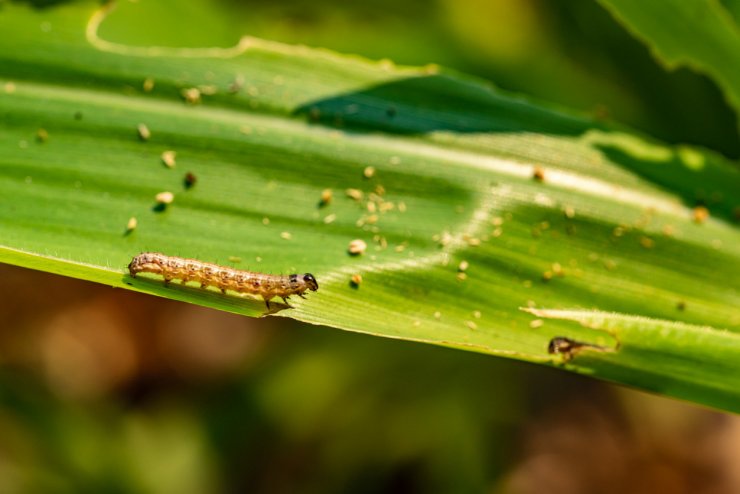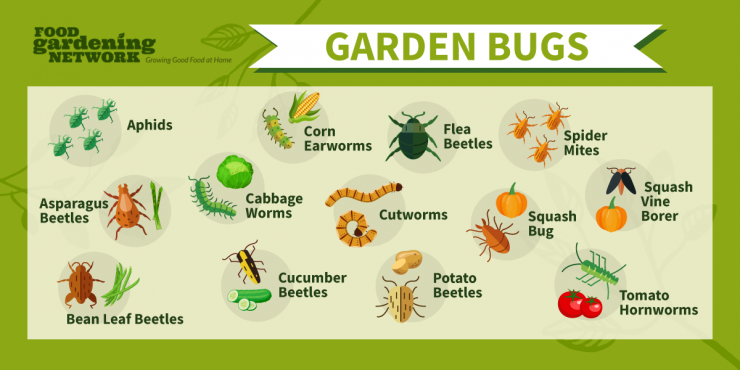
I’m just going to say it: There is a lot that can go wrong with a garden. Somehow, we humans have cultivated vegetables for about 10,000 years. But a few of the wrong vegetable garden pests, and all your tilling, sowing, weeding, mulching, and watering turns into a waste almost while you watch.
There’s also a lot that can go right. The marigolds you planted next to your tomatoes attract ladybugs that prey on aphids. The basil you planted beside your asparagus repels the asparagus beetle. Temperatures have been perfect for your squash. Then at harvest time, every vegetable was perfect.
Seriously, though, it’s usually some combination of these two. We adapt to nature at the same time we try to bend it to our wants. Still, there are some big bad vegetable garden pests out there that you need to know about, so you can take care of them before they take care of you.
Discover 7 top tips for growing, harvesting, and enjoying tomatoes from your home garden—when you access the FREE guide The Best Way to Grow Tomatoes, right now!
13 Vegetable garden pests that will eat up and spit out your hard work

1. Aphids. Aphids are tiny little bugs that bite into your plants and suck out the sap. They can be green, brown, white and several other colors, and you will usually find them in large groups. Aphid damage looks like curling or yellowing leaves and the insect sometimes leaves a sticky substance called honeydew that may look like a fungal growth.
2. Asparagus Beetles. As the name suggests, the asparagus beetle feeds on asparagus. The common asparagus beetle is black with white dots, while the spotted asparagus beetle looks a bit like a ladybug. If your asparagus is bent and brown, check for beetles. Normally, you can just pick them off and drop them in a pail of soapy water. You can also reduce their numbers by attracting beneficial insects like the ladybug.
3. Bean Leaf Beetle. The bean leaf beetle feeds on snap beans by eating holes directly through the leaves of the plant. The surest way to identify them is by the black triangle they have at the top of their wing covers. Check early in the season for bean leaf beetles and remove them as soon as you can.
4. Cabbage Worms. Cabbage worms are velvety green and are one of the vegetable garden pests that attack cabbage, kale, broccoli, and other cabbage family plants. This worm will decimate your garden if you let it. They eat the bases of plants and will go on to eat everything except stems. Thyme is a good companion plant, as it repels the cabbage worm.
5. Corn Earworms. Corn earworms can be tough to get to. Your best option here is to spray mineral oil on the corn silks as soon as they appear.
6. Cucumber Beetles. I don’t know if cucumber beetles are the worst vegetable garden pests, but they’re definitely up there. Not only do they feed on seedlings, leaves, vines, and fruits, they also spread bacterial diseases. These beetles have orange and black stripes and they leave behind yellowed and wilting leaves. One way to prevent them is through crop rotation. It’s also thought that nasturtiums help deter them.
7. Cutworms. Cutworms are caterpillars, and they may be grey to pink, green, and black. They tend to feed in the evening or on cloudy days, staying hidden at other times. They often feed on the bottoms of plants close to the ground. Fireflies and birds love to feed on cutworms, so making your garden friendly to these will help you here.
8. Flea Beetles. There are multiple species of flea beetles, so it’s easier to spot the damage they cause than try to determine which one you’re dealing with. Plus, they’re tiny and hard to see. Like the cucumber beetle, they can spread bacterial diseases which will do more damage than the beetle itself. Catnip and basil repels the flea beetle.
9. Potato Beetles. Many a potato has been destroyed by the potato beetle. This yellow-orange beetle also feeds on eggplants, tomatoes, and peppers. You can remove them by hand or make your garden attractive to ladybugs, which are a natural enemy of the potato beetle.
10. Spider Mites. Spider mites prefer hot, dry conditions. They pierce the underside of leaves to feed, leaving the plant discolored. You may also notice fine webbing around your plant. One easy way to get rid of them is to spray them with refrigerated water.
11. Squash Vine Borer. The squash vine borer is the larvae of a moth that lays eggs at the base of squash plants. When the eggs hatch, the larvae “bores” into the stems. You’ll notice wilting and holes at the base of the plant. Crop rotation, as well as tilling your soil, will help reduce the number of these vegetable garden pests.
12. Squash Bug. The squash bug is a little over a half-inch long and tends to be dark grey or brown. They suck the sap out of plant leaves, leaving them yellow and brown. They can be hard to catch, so prevention is ideal here. Companion planting with nasturtium works, as does crop rotation and composting your squash vines.
13. Tomato Hornworms. These things are UGLY. They’re big green caterpillars with what looks like a stinger on their tail end. Despite this, they can be among the more difficult vegetable garden pests to spot, as they camouflage so well. They will completely destroy your tomatoes. You can remove them by hand, but basil seems to work well at preventing them in the first place.
Vegetable garden pests are definitely my least favorite part of gardening, but it’s a reality. It’s best to know what you’re dealing with, then you can move forward toward an abundant harvest.
What have you found to be the worst pest in your garden? Any natural pest remedies you’d like to share in the comments?
Discover 7 top tips for growing, harvesting, and enjoying tomatoes from your home garden—when you access the FREE guide The Best Way to Grow Tomatoes, right now!





Could you add real pictures of some of the harder to identify pests?
I have planted sweet corn and something is eating at the leaves. How often should I water corn.
Help! Several of my plants have tiny holes in their leaves that I’m sure are where bugs are snacking. The leaves are older ones and mostly down toward the bottom of the plant. From your information, I would guess that they are cutworms. But the one pest that I did see was a very tiny green worm less than 3/16″ long. If they get knocked off the leaves won’t they just get back on them or go to another plant? How do you mix up water and dish soap to spray on the plants and how will it affect the pests? Thanks – Diana
It’s hard to tell without seeing, but a lot of people swear by a Neem oil spray, which you can buy at the store but you need to reapply after rains. And it can deter some pollinators too. It does sound like bugs but until you catch them in the act and Google them sometimes it’s hard to know. Some people just hose their plants done every day to knock bugs off but the best thing you can do is remove leaves and stems when you see big batches of eggs! Or release ladybugs in your garden, that can help too!
Can you please help me figure out a way to get rid of aphids in my melon plants and my squash plants I just bought 1500 ladybugs and released them and it seems to me that the aphids are just multiplying. I was so bad I had to destroy one plant, pulling it out and then actually burning it is starting to spread to my other plants. I have a big beautiful garden. I don’t want to lose all of it. Any help would be greatly appreciated. I’m desperate thank you. I’m sorry did you say spray the plant with cold refrigerated ice water
Infestations are so difficult to come back from once they’ve occurred. Ladybugs were a good try, a Neem oil spray might reduce activity, and hosing the plants down everyday might help too. Sorry you’re dealing with that! Best of luck!
I didn’t see any mention of grasshoppers. I’ve had terrible experiences with them devouring my young snap peas. Would love a suggestion for them.
How do I get rid of stink Beatles, they destroyed my peony plantsl
Also I always have slugs and have tried many things but they always find their way into my garden. I surround my entire vegetable garden with copper netting and this helps till fall. I use Slug be gone and set out shallow tins of beer. I have found that putting egg shells or coffee grounds around my plants definitely does not help . What else can I try. This year we tried spraying with garlic water and diatomaceous dust so we will see if that works. It has just rained for 6 or 7 days and the earth is soaked so the slugs will love that. Thanks.
Where are the Japanese beetles on this list? They are my biggest garden nemesis and SOOO hard to control!
Thanks for the great article! Last season, I first saw tomato worms in the garden. I have been gardening from my grandfather for several years and I have the feeling that growing food is a constant struggle with nature. But on the other hand, by adjusting “the inhabitants” of the garden, you can create your own small, personal paradise.
It would be extremely helpful to include photographs of all these pests
Not a comment but a question. If you find beetles on your cucumbers, can they still be eaten? Should the plant be destroyed?
Thank you
They can still be eaten but it’s a matter of personal preference, I don’t usually eat anything with big holes but some folks just cut those parts off. That kind of stuff can go into the compost so that it’s not totally wasted.